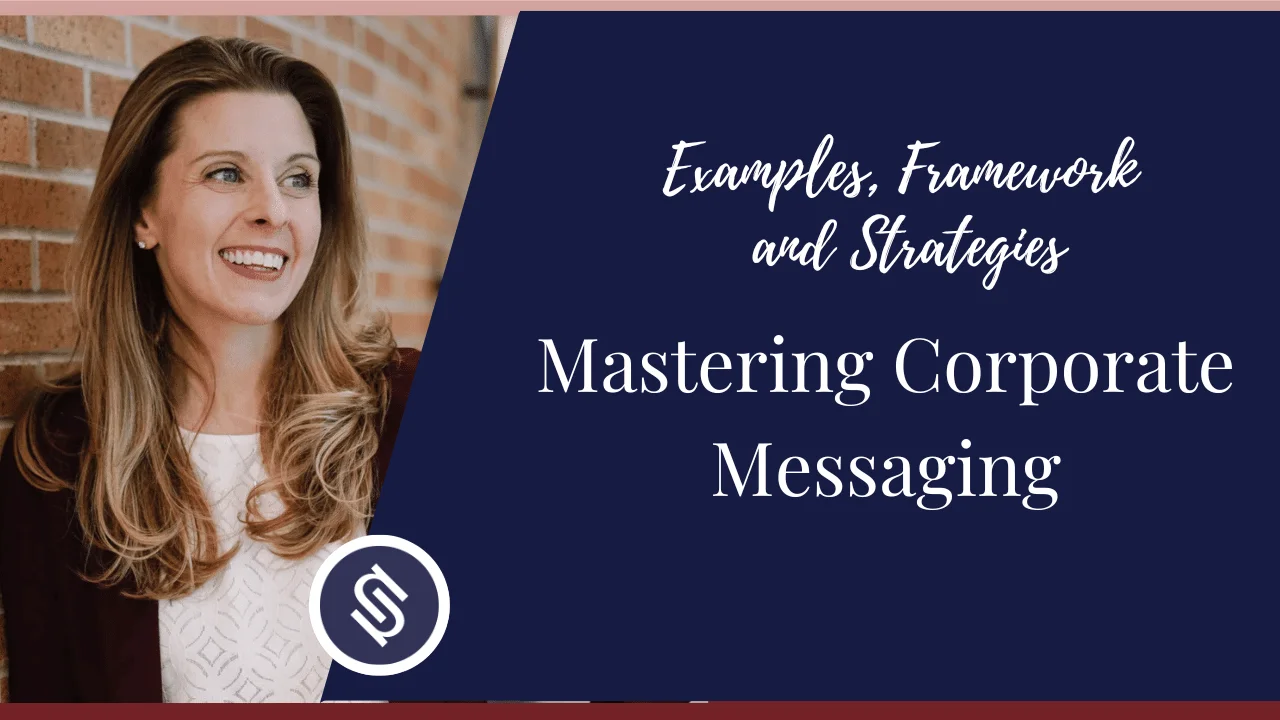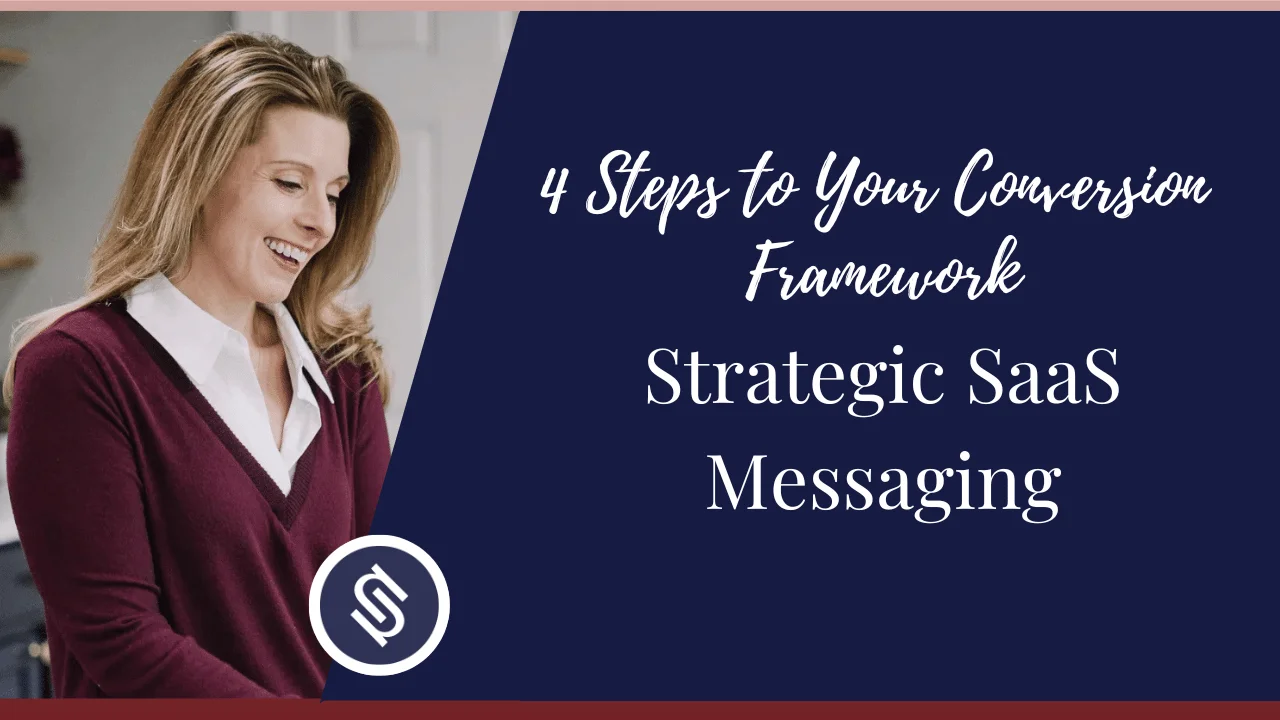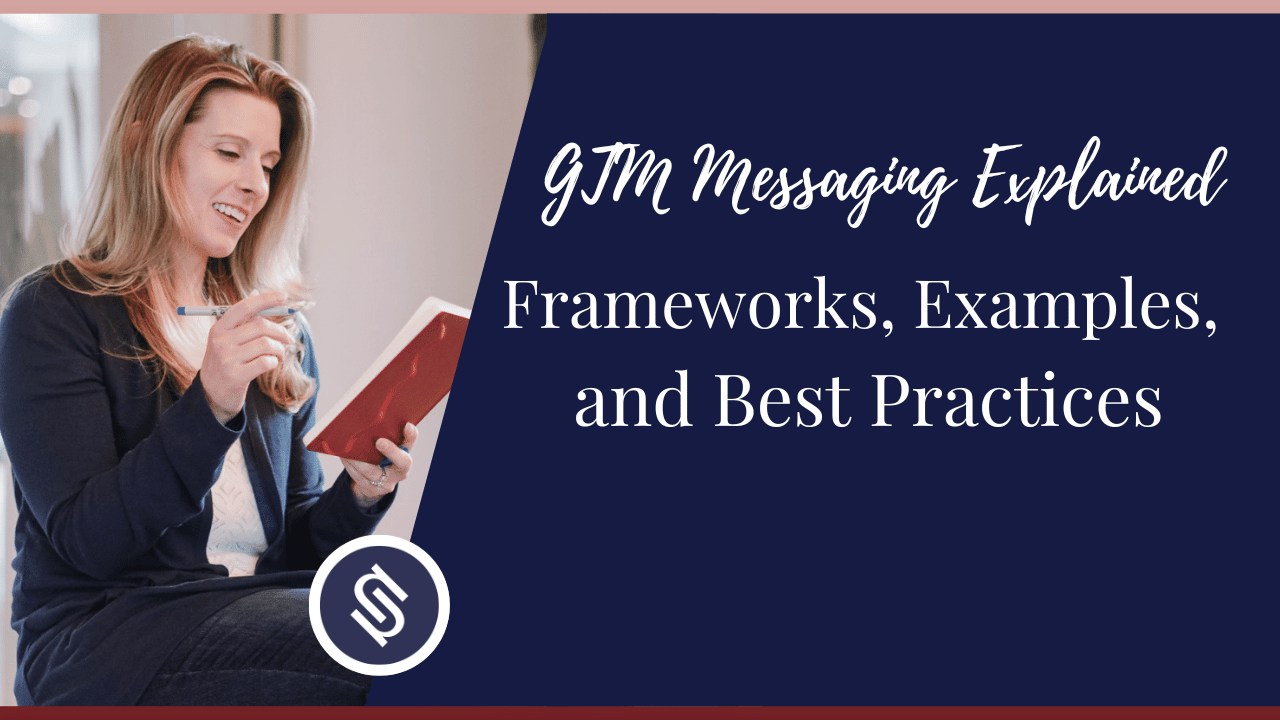As the audience’s attention span shrinks, it is crucial to create engaging content that can retain their attention for longer and make a brand easy to remember.
However, most businesses focus on their products (or services) and pay less attention to the messaging, which is a massive opportunity for them to stand out.
So, how can brands create compelling and consistent messaging that grabs the customers’ attention and sparks their interest in a brand? Below, we will examine what content messaging is and how businesses can utilize it to effectively communicate with their target audience.
TL;DR – How to Create Consistent Content Messaging
Here are five ways to create aligned messaging. We’ll cover these points in detail later in the blog.
- Create a detailed brand style guide
- Plan the content
- Train the team
- Regularly monitor and review the content
- Partner with a messaging strategist
As a brand messaging strategist, I can help you create a comprehensive content messaging strategy to keep your content consistent and memorable across all your touchpoints.
We can also collaborate to craft strategic, personalized messages that resonate with your target audience and leave a lasting impression.
Ready to strategize content messaging for your brand? Schedule a call with me to create targeted content that increases leads and drives sales.

What is Content Messaging?
Brand content messaging refers to the words or phrases that convey the brand’s value proposition (unique promises) to the target audience.
- The messaging should be cohesive across all the company’s touchpoints, including the website, packaging, social media posts, email marketing, business cards, and more.
- Through content messaging, a brand should also showcase its tone of voice and personality to influence how customers perceive the business and inspire them to make a purchase.
Keep reading as we dive deeper into this concept throughout the blog.
Why Is Consistency Important in Brand Content Messaging?
When done consistently, messaging can help a business in several ways:
A Brand Appears More Credible
When a brand maintains aligned messaging, it distinguishes itself from the competition, increases awareness among potential buyers, and becomes recognizable.
It helps customers trust and feel confident about the brand offerings. Also, when customers receive communications with similar messaging, it eases their decision-making process.
Prospects Can Connect with Your Brand
Cohesive brand content fosters an emotional connection with customers.
When the target group sees the same tagline and key messages across all communication channels, it solidifies the message and helps them connect instantly.
Reinforces a Brand’s Authority
The competition is stiff, and many companies strive to become industry leaders.
By creating aligned messaging, the prospects are more likely to remember a brand. That means when customers think about a specific product (or service), they can associate it with a brand. Therefore, consistency can help to increase the brand’s recognition and authority.

Content Messaging vs. Brand Messaging
While similar, content messaging and brand messaging have certain differences.
Typically, brand messaging refers to the overall communication strategy, while content messaging refers to the actual communication with the audience.
The table below breaks down how these two concepts differ:
| Content Messaging | Brand Messaging | |
|---|---|---|
| Purpose | Communicates what a brand is saying through campaigns, blogs, videos, and social media posts | Outlines the brand’s values, key messages, tone, and unique selling points |
| Focus | Carefully written content to emphasize the brand messaging, that is, the brand’s core identity | Aims to define the brand’s identity and promises |
| Flexibility | Changes depending on the content goals, the audience needs, and the platform | Usually, long-term doesn’t change |
| Aimed Perception | Intends to drive engagement and brand relevance | Builds trust and emotional connection with the audience |
Elements of Content Messaging
Several components tie the content messaging together.
Here are the four key elements to include in the brand content:
1. Unique Value Propositions
Most brands overwhelm readers with all the features and benefits of their solutions. Instead, effective messaging focuses on what makes a brand unique (the unique value messaging).
Pick three to four benefits that show why customers should choose a brand over the rest.
2. Emotional Connection
The messaging should be stimulating and include relevant content that resonates with the heart. Forget about creating generic content.
Instead, develop engaging and captivating messaging that resonates with consumers and sparks their emotions.
3. Key Message Statements
Another vital component in the messaging is the core message statements. These are four to twelve primary points that differentiate what a brand offers and articulate the main benefits.
Keep them straightforward and avoid jargon and industry buzzwords. Also, develop supporting messages that reinforce each core message.
4. Brand Vision and Values
A brand understands its vision (the future it aspires to) and values (what it stands for and the steps it takes to achieve its goals). The customers need to understand that as well.
The messaging should connect with the audience by sharing the values and vision.

How Can Brands Measure the Success of Their Content Messaging?
Brands can determine the impact of content messaging with the power of data.
These are the metrics to understand messaging campaigns and to improve content performance:
Website Metrics
Start by tracking the number of unique visitors and the time they spend on the site. The increased number of visitors and the time they spend on the site indicate that the messages are attracting and engaging.
Also, check the bounce rate and conversion rates. If there’s a high bounce or low conversion rate, the content might not be compelling.
Social Media Engagement
You should track the engagement numbers on your posts — the comments, shares, and likes. If your posts receive a high number of positive comments, it means your audience wants to engage in a conversation.
Similarly, a high number of likes suggests the prospects found your content interesting, and lots of shares show that your messaging resonates.
Monitor Brand Mention and Perception
Measure brand awareness and reach by tracking social media mentions and engagements. Monitor discussions about the company and the audience’s sentiments about a brand. Scan news articles, social media channels, and other relevant sources.
A high number of mentions indicates a brand has extensive online exposure.
Use these methods to analyze if the messaging campaign helps achieve the desired actions.

How to Build a Content Messaging Framework
A messaging framework (or architecture) is a document designed as a roadmap for the brand’s messaging. It helps create a strong proposition and defines clear core messages.
The four key steps to follow when creating a messaging framework are:
- Identifying the audience: Analyze target customers by age, preferences, needs, lifestyle, and more.
- Listing key and supporting messages: Identify 4 to 12 core statements that effectively showcase the values and value proposition to the audience. Also, develop supporting messages that reinforce the core items.
- Testing and adjusting the framework: Conduct an A/B test on the messages to see which appeals more to the audience. Remember to refine the messaging annually.
- Sharing it with the team: Share the framework with everyone working with the brand, including employees and partners, to ensure alignment and maintain consistency when creating company messages.
You can learn more about building a successful architecture in this blog: messaging framework essentials — what it is, how to create one, and more.

How to Create Consistent Content Messaging
To deliver similar messages across all brands’ communication channels, here’s what to do:
1. Create a Detailed Brand Style Guide
Before creating your messaging, establish a clear and consistent style guide. This document outlines the brand assets (logo, font, and more) and establishes rules for the message content. The guide also establishes the tone of voice, values, and more.
It’s also a reference tool for people working on your content to standardize the messaging.
2. Plan the Content
Plan content using a content calendar to deliver cohesive messaging. Consider listing the communication channels to align goals and maintain a cohesive messaging strategy.
3. Train Your Team
All team members, including the customer service agents, writers, and social media executives, must participate in creating aligned brand messaging. Encourage them to use the style guide and maintain the best messaging practices.
Remember to provide feedback and identify areas for improvement to craft the best messages that support the business goals.
4. Regularly Monitor and Review Your Content
Audit content regularly to identify inconsistencies in the messaging style guide. Then, update or remove inconsistent content.
Remember to actively engage in brand conversations and respond promptly to your audience. That way, a brand can adjust its messaging according to feedback and evolving trends.
5. Partner with a Messaging Strategist
If creating content messaging seems overwhelming, consider partnering with a messaging expert.
I’m Nora Sudduth, and we can collaborate to develop a well-structured messaging guide that streamlines your content creation process. Together, we can create compelling content that aligns with the brand’s values and identity, fostering a cohesive and authentic brand presence.
Book a one-on-one call and let us craft compelling messaging that generates high-quality leads.

Examples of Strong Content Messaging in Action
Content messaging is crucial for keeping brands relevant and enhancing recognition in highly competitive markets.
Here are brands that consistently build trust and drive the intended action through their content:
1. HubSpot
HubSpot, a CRM software, focuses on creating content that builds an emotional connection with its readers through effective messaging. They achieve this by creating blogs and resources that educate their audience on marketing.
A good example is their HubSpot Academy, which provides actionable insights and real-life tutorials. Content messaging works by positioning the brand not just as software but also by creating an emotional connection with the audience through education and empowerment.
2. Notion
Notion, the one-stop workspace, focuses on ensuring its content messaging is simple, personal, and aspirational. They achieve this by using tutorials and stories that demonstrate to their audience how existing clients utilize the tool to design their workplaces.
An example is their Notion Stories, which features creators and teams using Notion to organize their lives. Their content messaging creates an emotional appeal.
3. Buffer
Buffer, the social media management platform, creates content that highlights its expertise. Their content messaging approach has helped them build customer trust and position their brand as a leader.
One of their strategies is their podcast, ‘The Science of Social Media,’ which explores marketing topics.

Aligning Your Messaging with the Buyer’s Journey
Businesses must master creating content tailored to each buyer stage while ensuring the brand messaging remains aligned throughout.
Here are the four steps to follow:
1. Map the Customer Journey
The first step to aligning content messaging is to understand every customer interaction. The process can help a brand identify areas for improvement in its messaging.
The customer journey can be divided into five stages: awareness, interest, consideration, decision, and retention.
2. Tailor Content Around Different Stages
Create messaging that raises brand awareness, informs the audience, and leaves a lasting impression.
- Awareness Stage: The content should be educational and empathetic to the buyers’ pain points. A brand can create blogs, guides, infographics, and short educational videos to enhance its online presence.
- Consideration Stage: A brand should focus on educating the audience about the solution that addresses the customer’s problems. A business can use case studies, product comparisons, webinars, and emails.
- Decision Stage: A brand should reinforce trust using result-driven content to make it easy for the audience to make the decision. A brand can create ROI calculators, customer testimonials, case studies, and personalized demos to enhance its offerings.
- Post-purchase Stage: The goal is to turn customers into advocates. The messaging should include success stories and quick wins.
3. Track Messaging Success Using Metrics
To gauge the effectiveness of content messaging, focus on key performance indicators (KPIs) within the customer acquisition funnel.
The metrics can include social media engagement, bounce rate, website traffic, and the sales conversion rate.
4. Review and Update the Messaging
Besides the metrics, pay attention to customer insights gathered through surveys, social media comments, and customer service interactions to gather feedback.
Use the data to update the messaging, ensuring the content resonates with all buyer stages.

Common Content Messaging Mistakes
Though consistent content messaging is essential, it isn’t easy to achieve and maintain.
Here are four common pitfalls that lead to disjointed messages:
1. Unclear Brand Identity and Brand Values
The first step to a successful messaging campaign is to define the brand’s core values and build your brand identity. Without a clear roadmap, employees may use different tactics when creating content, resulting in inconsistent messaging.
2. Misalignment in the Messaging
While aligning content across various communication channels, the core message and overall tone can lose cohesion. This results in mixed and inconsistent messaging across different communication platforms.
3. Lack of Proper Audience Analysis
Most companies assume success without conducting proper research. One mistake is using a small sample size, which leads to biased results. Also, inappropriate data research methods might fail to adequately capture a diverse audience with multiple needs, expectations, and preferences.
Stereotyping an audience can also lead to inaccurate information about your customers. All of these will prevent a brand from creating meaningful, lasting connections with its target customers.
4. Using Too Many Marketing Channels
In the digital age, there are many channels to engage your audience and inspire action. However, using many marketing channels simultaneously can be a recipe for failure, especially if you don’t consistently engage your audience across all platforms.
To wrap up this section, you should be mindful of these mistakes. Develop a messaging strategy to clearly outline guidelines for crafting an impactful message and avoiding these pitfalls.

Frequently Asked Questions (FAQs)
In this section, we shall address common queries related to content messaging.
How Can Brands Use Content Messaging to Enhance Customer Engagement?
Brands should create captivating content messages that resonate with customers and inspire them to connect emotionally with their businesses. They should also create consistent messaging that creates a memorable brand image.
What Role Does Social Media Play in Brand Content Messaging?
Social media is an undeniable marketing channel and one of the brand’s touchpoints with potential clients.
Brands can post pictures, videos, and content that creates interest. Still, companies should respond to comments, likes, and shares to engage with the audience and build a community.
How Can Visual Content Enhance Brand Messaging?
First impressions are key to a brand image. So, the right visuals — logo, colors, images, fonts, and more — appeal to your customers and make it easy to convey your message.
Visual content emotionally connects customers with your brand message, making it easy for them to recognize your brand.
For example, one of Nike’s visuals is the iconic swoosh logo with official white and black colors. These elements are easy to remember, and they support Nike’s slogan – ‘Just Do It’- and their core messages – inspiration, empowerment, and innovation.
What Are the Latest Trends in Content Messaging for Brands?
Here are some of the latest content messaging trends:
- As consumers desire deeper connections with brands, businesses must connect with their audience through compelling conversational messaging.
- There’s also a spike in brands adopting messaging across different channels.
- Another trend is creating brand messages optimized for audiences on the go.
Should I Have Different Messaging for Different Audiences?
Yes.
Personalizing brand content is expected to ensure that different audiences feel seen and valued. Here’s how to do it:
- Emphasize the details that matter most to the audience.
- Tailor communication according to what the goal is for each audience, whether it’s to encourage sign-ups, raise awareness, or build long-term loyalty.
Can I Repurpose Old Content with New Messaging?
The short answer is yes. Existing content is valuable because it can save time and effort, help a brand reach a new audience, and reinforce the core messaging.
Some ways to repurpose existing content include:
- Refreshing old blogs
- Pulling out key insights from blogs
- Turning long-form content into social media posts
Conclusion
Use the information throughout the guide to create content messages that align with the brand values and identity. The content should also align with the unique value propositions and foster an emotional connection with the audience.
Remember to keep the messages simple, clear, and engaging.
However, if creating and tailoring your content messaging feels overwhelming, consider partnering with me, Nora Sudduth.
Together, we can define your ideal customer profile, determine your brand’s core messages, and create tailored messages that anchor to your brand’s core.
Each message will emphasize what matters to your audience and be tailored to the channels your customers use.
Book a discovery call, and let’s create persuasive content that converts leads into clients effortlessly.





